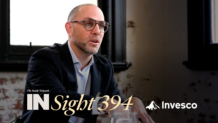Investors shake off home bias, shift to international equities
Australian investors’ love for domestic equities remains strong, but repeated exhortations from advisers to diversify seem to be finally taking root, with interest in international equities actually superceding that of domestic equities according to recent data from VanEck.
Investors in Australia, and especially retirement age investors who prioritise income yielding investments, have historically preferred domestic equities because of the imputation credits attached, which effectively doubles the income paid.
For advisers and investors alike, the idiosyncratic nature of our ‘franking’ credit system has always provided an investment conundrum: how heavily do you tilt to domestic equities in order to capture the extra income, while also adhering to basic principles of asset allocation risk by spreading investments across classes?
That tension seems to be settling, with “more people than ever” looking to expand their overseas portfolio, according to VanEck. Over 75 per cent of Australian investors are planning to invest internationally next year, while about 70 per cent are considering domestic equities.
A driving force for this shift to international equities is the desire to access a diversified set of sectors, in particular the tech sector that has performed so well over the past five years.
“It’s about getting out of an Australian equity market that is dominated by banks and mining companies, and into growth companies like some of the big technology players,” says Andrew Lakeman (pictured), co-founder and head of Australia at Atlantic House.
“The ASX100 is a bit like the FTSE100, neither are really great incubators of tech companies. Australia only has a few really successful tech companies, and even the likes of Atlassian are listed on the NASDAQ.”
Part of the shift to international equities is being put down to the increasing popularity of ETF products, which are cheap, readily available, enjoy almost absolute liquidity and have benefitted from more than a decade of tracking indices that have been on a record bull run. International equity ETFs have proliferated in this time, and given investors an easy access point they didn’t have before.
“The Australian investor profile is changing,” said VanEckAsia Pacific CEO and managing director Arian Neiron in the VanEck report. “Australians have historically demonstrated a home bias in their portfolios, despite the domestic market representing only a small portion of the opportunities available in the global investment universe. The increasing desire to include offshore exposure aligns with the rapid growth of ETFs in the Australian market which offer access to nearly every asset class and market around the world.”

It comes as no surprise that ETFs are the most popular investment vehicle, with 60 per cent of surveyed respondents saying they were their favourite investment product. For those under 40, that number increases to 80 per cent.
“Additionally, two-thirds of respondents plan to increase their ETF investments in the next 12 months, reflecting a rise from 59 per cent in the previous year,” VanEck adds. “59 per cent of SMSF investors plan on increasing their allocation to ETFs. One in three investors now use ETFs for more than half of their portfolio.”
According to Neiron, the growth of ETFs will continue, which will only add to investors’ collective access to diversified investment products.
“The growth trajectory of the Australian ETF industry continues to accelerate with record-breaking flows to many of the leading funds,” he said. “By the end of 2024, we expect the ETF market in Australia to reach $220 billion in real passive ETF funds under management (i.e. not including flows into unlisted funds).”











